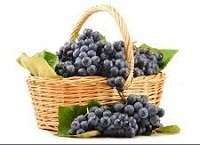The following page describes everything about Curd. It tells what is Curd meaning, and what do we call Curd in Hindi. Some hidden facts also like the health benefits of Curd and much more.This page describes facts about Curd. It tells Value of Curd including Minerals and Vitamins in Curd and describes what are the natural benefits and curative properties of Curd with Health Benefits of Curd.
Curd
Other English Name /Scientific Name: Yogurt
Indian Name: Dahi
Description of Curd
Following is the Description of Curd. It includes Curd color and some more information about Curd–
Curd or yogurt is a lactic fermentation of milk. It is esteemed for its smoothness, its, pleasant and refreshing taste. It is highly versatile and health-promoting and one of the most valuable therapeutic foods. The milk of a cow is generally used in preparing yogurt in Europe and America. In India, buffalo milk is also extensively used. In Russia, the milk of sheep, goat and mare is largely used for the same purpose. The best and purest milk should always be used for preparing the curd. Before it is curdled, the milk should be boiled for about 10 minutes and the temperature of the milk brought down to the lukewarm state. The freshly cultured starter should then be added to it and mixed thoroughly with the milk. Generally one teaspoonful of starter is sufficient for every 500 ml. of milk. The quality of curd depends to a great extent on the starter used. The better the seed the sweeter will be the aroma and firmer will be the texture of the curd. In hot season the milk curdles easily. But in cold season, it is necessary to cover it with a blanket and keep it in a warm place. It generally takes about six to eight hours for the milk to coagulate in the hot season. In cold weather it takes 12 to 16 hours for it to form a firm mass.
Origin and Distribution of Curd
The Following paragraph describes the origin and distribution of the Curd. Go through to know more about the origin and distribution of the Curd–
The world yogurt is of Turkish Origin. It is believed that the first curd was made in Turkey. Legend has it that a nomad while travelling through a desert, kept some milk away in a goat-skint -sbagkin bag and hung it across the back of his camel. On opening the bag a few hours later, he found that the liquid has been transformed into a thick tangy custard. The desert sun and the bacteria inside the bag produced the required condition for the preparation of Yogurt. Curd has played an important part in the diet of nations from time immemorial. It has been regarded as a wholesome food in India, Turkey, Egypt, Armenia, Yugoslavia, Rumania, Russia and Central Europe. In Western Europe and America also, it has become very popular during the last few decades.
Value of Curd
Curd nutrition is another matter of knowledge. So here we are providing Curd nutritional value which actually tell about Curd nutrients and their benefits.
Curd is very nourishing food. It is a valuable source of protein, essential vitamins and minerals. It is also a rich source of calcium and riboflavin. The proteins in curd are more readily digested than the protein in milk. It has been estimated that regular milk is only 32 per cent digested after an hour in the digestive tract, whereas 91 per cent of curd is digested within the same period of time. It is, therefore, an ideal diet for those with sensitive digestive systems, particularly young children and elderly persons.
Curd Food Value
Moisture in Curd 89.1%
Protein in Curd 3.1%
Fat in Curd 4.0%
Minerals in Curd 0.8%
Carbohydrates in Curd 3.0%
100%
Minerals and Vitamins in Curd
Find details about Minerals and Vitamins in Curd. It specially focuses on Curd Nutrition–
Minerals and Vitamins in Curd
Calcium in Curd 149 mg
Phosphorus in Curd 93 mg
Iron in Curd 0.2 mg
Vitamin A in Curd 102 I.U
Vitamin C in Curd 1 mg
Small amount of Vitamin B Complex
Value per 100 gms edible portion
Calorific Value – 60
Natural Benefits and Curative Properties of Curd
Curd has a lot of curative properties and natural benefits. Read this passage to find benefits of Curd–
Although curd has a nutritive content similar to fresh milk, it has extensive ‘special values for therapeutic purposes. During the process of making curd, bacteria convert milk into curd and predigest milk protein. These bacteria then inhibit the growth of hostile or illness-causing bacteria inside the intestinal tract and promote beneficial bacteria needed for digestion. These friendly bacteria facilitate the absorption of minerals and aid in the synthesis of vitamins of B group. Buttermilk, which has same nutritive and curative value as curd is prepared by churning curd and adding some water, removing the fat in the form of butter. Curd is also considered one of the best aids to natural go(Ki looks. It supplies the nerves and the skin with healthy ingredients and counteracts the ill-effects of exposure to the scorching sun. The bacteria in curd make the skin soft and glowing. Curd mixed with orange or lemon juice is a good face cleanser. It supplies moisture to the skin and fruit juice provides the essential vitamin C. One tablespoonful of juice should be mixed in one cup of curd. This should be applied to face and neck and allowed to dry for 15 minutes. It should then be wiped off with soft tissue and washed with water. A mixture of oatmeal flour and yogurt has been found effective in making the skin fairer and softer. This mixture should be kept on the facial skin for 15 to 20 minutes and then washed off with warm water. For pimples, a paste of curd and Bengal gram flour or besan should be applied on the face and then washed off. Curd is also considered valuable in conditioning the hair. It makes the hair soft, healthy and strong. Curd should be massaged right into the roots of the hair before being washed off. Dandruff can be removed by massaging one’s hair for half an hour with curd which has been kept in the open for three days.
Curd has wonderful health benefits in Treatment of Castro-intestinal Disorders, Insomnia, Premature Ageing, Hepatitis and Jaundice, Burning in Rectum, Skin Disorders. To read more about them click the link below-
Click Here for Amazing Health Benefits and Curative Properties of Curd


